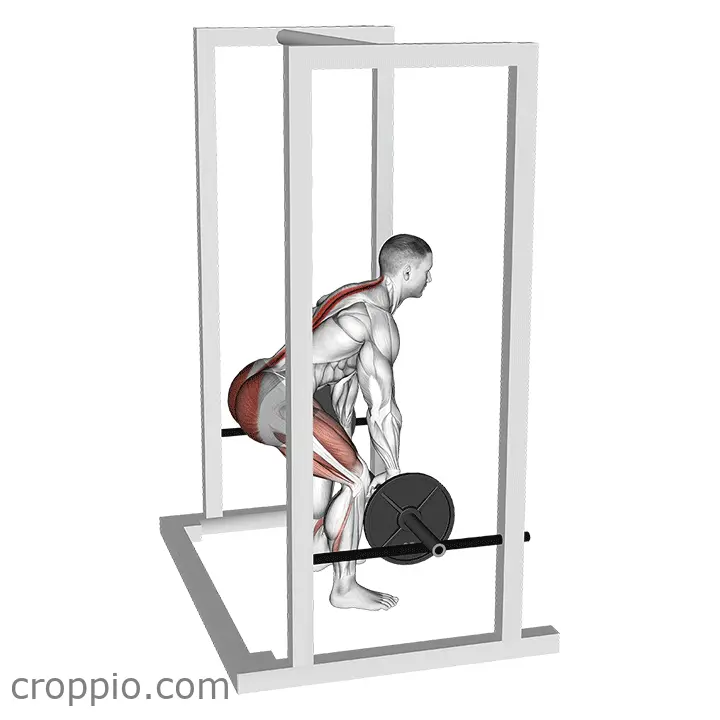Frog Reverse Hyperextension

Muscles Involved
The frog reverse hyperextension primarily targets the gluteus maximus and hamstrings, which are crucial for hip extension and stabilization. Additionally, this exercise engages the lower back muscles, particularly the erector spinae, contributing to spinal stability. The hip adductors, responsible for thigh movement, are also recruited due to the frog-like posture, promoting flexibility and strength in the inner thighs. Overall, this compound movement engages both primary and secondary muscle groups to enhance lower body strength and posterior chain development.
Top Mistakes
- Neglecting spinal alignment: Rounding the back can lead to injury and reduces the effectiveness of the exercise.
- Improper range of motion: Not raising or lowering the legs sufficiently can limit muscle engagement.
- Excessive momentum: Using momentum instead of controlled movements decreases muscle activation and increases injury risk.
- Holding breath: Forgetting to breathe can limit oxygen flow and reduce performance.
Execution Tips
- Start by lying face down on a bench or flat surface, ensuring your hips are just off the edge.
- Position your legs in a frog stance, with knees bent and feet together, creating a diamond shape with your legs.
- Engage your core and maintain a neutral spine throughout the movement.
- Raise your legs simultaneously, aiming for an angle of about 30-45 degrees, squeezing your glutes at the top.
- Lower your legs back to the starting position with control, avoiding any sudden movements.
- Ensure consistent breathing—exhale while raising your legs and inhale while lowering them.
Workouts
The frog reverse hyperextension can be effectively integrated into a lower body workout program. Ideal sets and reps include 3 to 4 sets of 10 to 15 repetitions. This exercise pairs well with others that target the posterior chain, such as deadlifts, hamstring curls, and good mornings. Allowing for adequate rest between sets will maximize muscle engagement and recovery. Including this movement in a comprehensive lower body routine can facilitate balanced development and strength.
Conclusion
Incorporating the frog reverse hyperextension into your workout regimen provides significant benefits, such as improved glute development, enhanced hamstring strength, and better lower back stability. This exercise not only targets essential muscles involved in hip extension but also promotes flexibility and coordination. Engaging in this movement regularly can lead to increased power and overall athletic performance, making it a valuable addition to any fitness routine.



